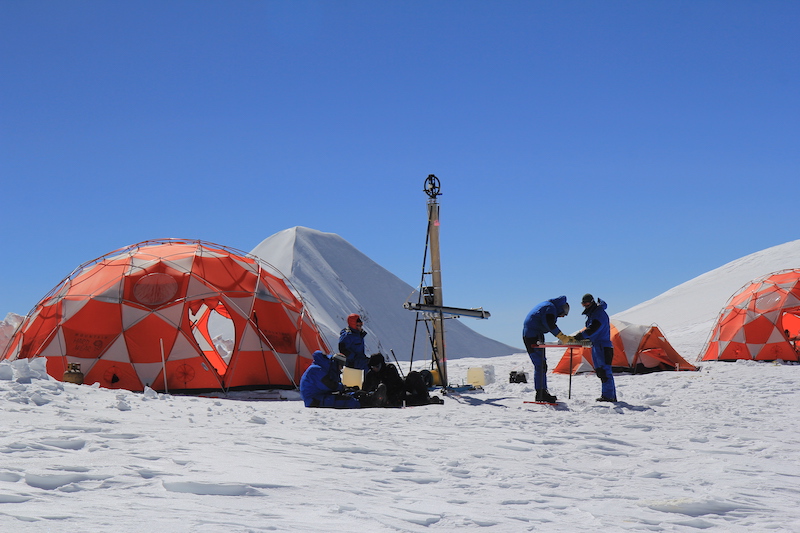Illimani / Bolivia
June 2017

2 ice cores
137 and 134 m lenght
18 000 years of planet history
Team
International team (France, Bolivia, Russia, Brazil) made up of 14 scientists led by Patrick Ginot from the Grenoble Institute of Environmental Geosciences (IGE), Romain Biron (IRD, France), Pierre Vincent (IRD, France), Thomas Condom (IRD, France), Bruno Jourdain (UGA, France), Christian Vincent (CNRS, France), Nicolas Caillon (CNRS, France), Luc Piard (CNRS, France), Xavier Faïn (CNRS, France), Joël Savarino (CNRS, France), Vladimir Mikhalenko (Institute of Geography, Moscow), Stanislav Kutuzov (Institute of Geography, Moscow), Filipe Gaudie Ley Lindau (Federal University of Rio Grande do Sul, Brazil), Alvaro Soruco (University Mayor San Andres La Paz, Bolivia), Sarah Del Ben (Wild-Touch Film Director, France).Glacier
Reaching a peak altitude of over 6,400 m, the Illimani glacier is located just above Bolivia’s capital, La Paz, on the border between the humid Amazon Basin and the arid Bolivian Plateau. This site has retained a multitude of information from a variety of sources, including changes in rainfall, wildfire (Amazon side), man-made pollutant emissions and urban pollution (Altiplano side). With a depth of 140 m and a reduced glacier flow, the site has preserved up to 18,000 years of climate and environmental records. Studying it will therefore provide a way to reconstruct the past of such an environment, from the last Ice Age to today.This ice from Illimani contains 18,000 years of climate and environmental history (at the time when the ice near the bedrock was formed, prehistoric man was busy inventing harpoon heads and making the first cave paintings, long before Egyptian civilisation or the development of writing).
Results
Two ice cores measuring 134 m and 137 m were collected. Drilling of a third ice core had initially been planned but could not be attempted due to a lack of time and the need to ensure the safety of the teams.
The ice cores were transported by ship from Chile and arrived in Grenoble in August 2017 to be temporarily stored at the Institute of Environmental Geosciences (IGE). Analysis of the reference core will be carried out at the IGE from Autumn 2019, and the heritage ice core will be transported to Concordia.
Press release announcing mission - Press release announcing results
Updated on October 30, 2023

